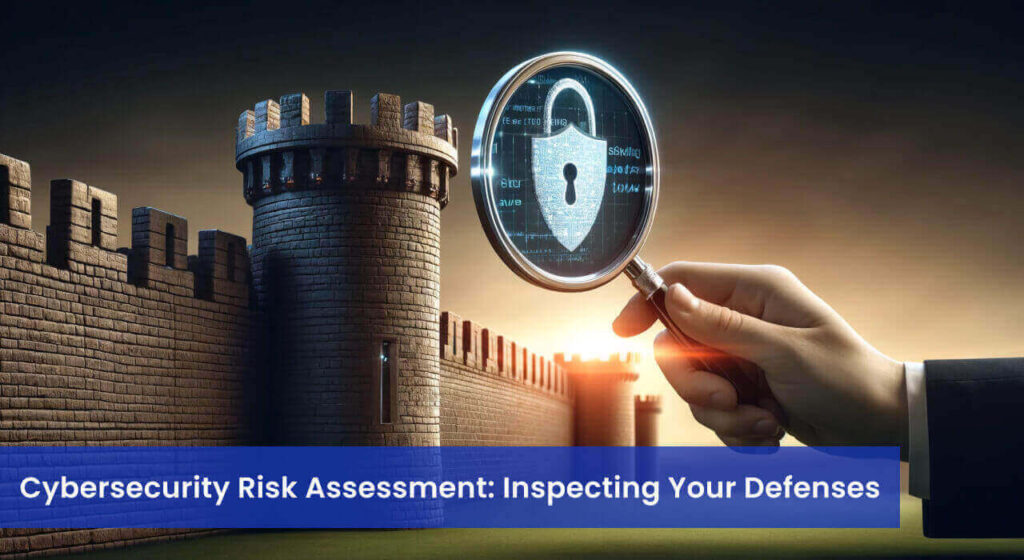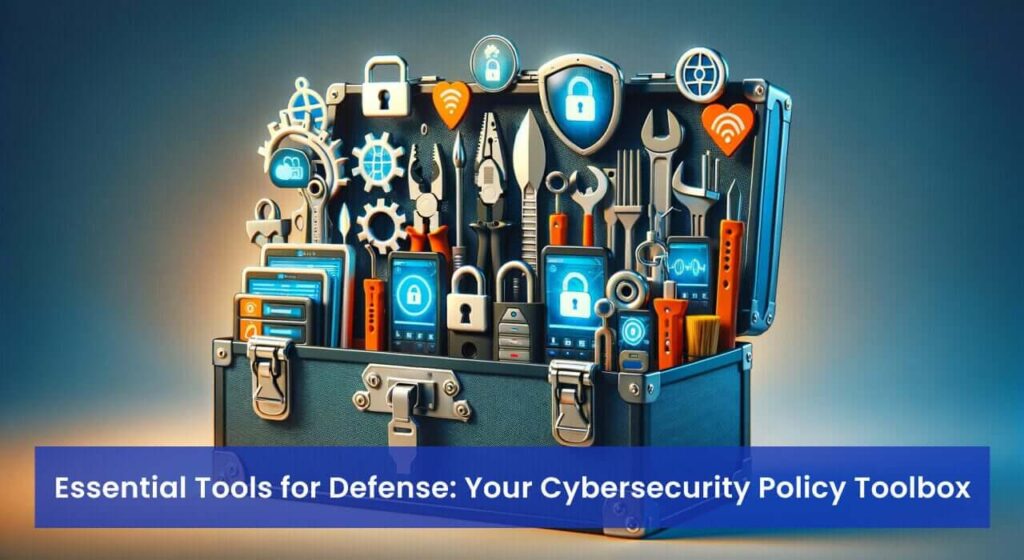
The digital landscape offers a wealth of opportunities for small businesses, but it also exposes them to a growing threat: cyberattacks. In 2023, a reported 43% of cyberattacks targeted small businesses according to a cited source on small business cyber attacks: https://www.ponemon.org/, a global cybersecurity research organization. These attacks can have devastating consequences, causing data breaches that expose sensitive customer information, financial losses from disrupted operations or stolen funds, and irreparable reputational damage.
A well-crafted cybersecurity policy acts as a critical line of defense for your small business. It establishes clear guidelines and best practices to safeguard your valuable data, minimize the risk of cyberattacks and ensure the continued success of your organization.
Why You Need a Cybersecurity Policy

The misconception that only large corporations face cyber threats is a dangerous fallacy for small businesses. Due to their perceived lack of sophisticated security measures, small businesses are increasingly targeted by cybercriminals. According to the Verizon 2023 Data Breach Investigations Report [Verizon 2023 Data Breach Investigations Report], 46% of all cyberattacks targeted small businesses, highlighting their vulnerability.
The consequences of a successful cyberattack can be crippling for a small business. A data breach, for example, can expose sensitive customer information like credit card numbers and Social Security numbers, leading to financial losses, regulatory fines, and a severe erosion of customer trust. A ransomware attack, which encrypts critical data and demands a ransom for its release, can disrupt operations and cause significant financial losses. The case of Acme Corp, a small accounting firm, exemplifies this risk. In 2021, the company fell victim to a ransomware attack that encrypted their client data. The disruption to their operations and the cost of data recovery severely impacted their business.
A robust cybersecurity policy serves as a proactive measure to mitigate these risks. By outlining clear guidelines and best practices for employee behavior, data handling, and system access, a policy educates your workforce and minimizes the potential for human error, a leading cause of cyberattacks. Additionally, a documented cybersecurity posture deters cybercriminals who often target low-hanging fruit with weak defenses. Furthermore, a well-defined policy can help your business comply with relevant industry regulations regarding data privacy and security.
In essence, a cybersecurity policy is an investment in the future of your small business. It empowers your employees, strengthens your defenses and safeguards your valuable assets, allowing you to focus on growth and success.
Conducting a Cybersecurity Risk Assessment

Before fortifying your defenses, it’s crucial to understand your vulnerabilities. A cybersecurity risk assessment acts as a comprehensive audit, identifying your business’s weak spots and potential entry points for cyberattacks. By proactively pinpointing these vulnerabilities, you can prioritize security measures and allocate resources effectively.
Imagine your business as a castle. A risk assessment is akin to inspecting the castle walls, identifying any crumbling sections or hidden passages that could be exploited by attackers.
There are several key steps involved in a cybersecurity risk assessment:
- Identify Critical Assets: This initial step involves recognizing the most valuable assets your business possesses. These could be tangible assets like customer databases or financial records, or intangible assets like intellectual property or confidential business plans.
- Enumerate Potential Threats: Once you’ve identified your critical assets, consider the potential threats they face. This might include common cyberattacks like malware infections, phishing scams, or unauthorized access attempts. Industry-specific threats should also be factored in.
- Assess Vulnerabilities: With both assets and threats in mind, meticulously examine your systems and processes for weaknesses that could be exploited. This could involve outdated software, weak passwords, unsecured Wi-Fi networks, or a lack of employee cybersecurity awareness training.
- Determine Risk Levels: Analyze the likelihood and potential impact of each identified threat on your critical assets. This will help you prioritize the most critical vulnerabilities to address first.
- Develop Mitigation Strategies: Based on your risk assessment, develop a plan to address the identified vulnerabilities. This might involve implementing security software updates, strengthening password policies, or conducting employee cybersecurity training.
By following these steps and addressing the identified vulnerabilities, you can significantly strengthen your cybersecurity posture and minimize the risk of a successful cyberattack. Several free and paid tools and resources are available online to assist you in conducting a cybersecurity risk assessment. Consulting with a qualified cybersecurity professional can also provide valuable guidance.
Core Elements of a Cybersecurity Policy

This section forms the backbone of your cybersecurity strategy, outlining essential elements to safeguard your business.
- Password Management : Robust passwords represent the initial barrier against unauthorized access. A well-defined password policy should mandate complex passwords with a minimum length (ideally 12 characters or more) and a combination of uppercase and lowercase letters, as well as numbers and special characters, to enhance security and protect against unauthorized access.
- Access Controls: Not everyone needs access to all your data. Implement a system of access controls to restrict access to sensitive information based on job roles and responsibilities. This might involve user permissions, multi-factor authentication, and data encryption.
- Data Security: Your valuable data requires robust protection. A well-defined data security policy should outline procedures for data backup, encryption, and proper disposal. Regularly backing up your data ensures you have a copy in case of a cyberattack or hardware failure. Encryption scrambles your data, making it unreadable to unauthorized users.
- Incident Response: Even with the best defenses, cyberattacks can happen. An incident response plan outlines a clear course of action for identifying, containing, and recovering from a security breach. This plan should define roles and responsibilities, communication protocols, and data recovery procedures.
- Employee Training: Employees are often the first line of defense against cyberattacks. Regular cybersecurity awareness training educates your staff on common threats, social engineering tactics, and best practices for secure behavior. This training empowers them to identify and report suspicious activity.
- Mobile Device Security: The increasing use of mobile devices for business purposes necessitates mobile device security measures. A mobile device security policy should mandate strong passwords, screen locks, and restrictions on app installations for business-related devices. Additionally, it should outline procedures for lost or stolen devices.
- Vendor Management: Third-party vendors can introduce security risks to your business. Carefully assess the cybersecurity practices of any vendors you work with and ensure they meet your security standards. Include data security clauses in contracts with vendors to protect your sensitive information.
By implementing a comprehensive cybersecurity policy and conducting regular risk assessments, small businesses can significantly reduce their exposure to cyberattacks. Remember, cybersecurity is an ongoing process. Regularly review and update your policy to reflect evolving threats and technological advancements. A strong cybersecurity posture fosters trust with your customers, protects your valuable assets and ensures the continued success of your small business.
For a deeper understanding of the importance of multi-factor authentication (MFA) and how to implement it to enhance your business’s security, read our latest article titled ‘Multi-Factor Authentication (MFA): The Extra Layer of Security Your Business Needs.’ This comprehensive piece explores the various forms of MFA, its benefits for businesses, and the implementation of a robust MFA strategy. Don’t miss the opportunity to read this article.
Categorized in:
Comments